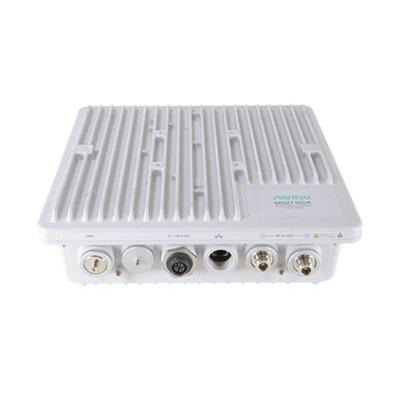
Anritsu MS27102A
Anritsu MS27102A : Remote Spectrum Monitor
The Anritsu Remote Spectrum Monitor MS27102A is designed to both mitigate interference problems and identify illegal or unlicensed signal activity. It is a full-featured platform for monitoring and recording signals in user-specified frequencies and is capable of sweep rates up to 24 GHz/s, enabling this probe to capture many types of signals including periodic or transient transmissions as well as short bursty signals. The 20 MHz instantaneous FFT bandwidth available on the Anritsu Remote Spectrum Monitor MS27102A provides the ability for wideband, real-time captures of signal activity for subsequent post-processing. IQ captures can be recorded both in block mode or streamed. A save on event feature is also provided to capture spectrum measurements only when certain user-specified thresholds are violated, which saves memory space since only signals of interest are captured and recorded. The Anritsu Remote Spectrum Monitor MS27102A is offered in a weather-proof IP67 enclosure for outdoor mounting in the harshest of environments, and comes standard with one RF Input, although a second port can be optionally added for use with two antennas.
Communicating with remote spectrum monitors
Several ways of communicating with the Anritsu Remote Spectrum Monitor MS27102A can be utilized including:
1. Integrated Web Server
With an integrated web server, a user from anywhere in the world can log in to the spectrum monitor and control any of its features using an internet browser (Chrome and FireFox supported). This includes frequency setting, RBW/VBW control, reference level configuration, and many other settings relevant to the users spectrum monitoring application. Trace data, spectrograms, and other measurements can also be viewed. Because it is operating system platform agnostic, any electronic device capable of rendering a browser will work with the web server. PCs/laptops, tablets, and even smartphones can be used to view spectrum and adjust remote instrument settings. Each monitor also features Gbit Ethernet, allowing fast transfers of measurement data and control information.
2. SCPI Programming
Users can also write their own monitoring program using available SCPI commands. Anritsu provides a user manual listing each SCPI command, a description of the commands, and the correct syntax required for each command. Additionally, each individual pair of IQ data output by the monitor is time-stamped using high-precision GPS signals. This enables the user to use IQ data for Time Distance of Arrival (TDOA) applications for geo-locating signal positions. IQ data time stamp resolution is less than 9 nsec for precise signal location calculations.
3. Vision Software
Vision software is also provided as an option for the Anritsu Remote Spectrum Monitor MS27102A. It works with the monitoring hardware to automate the process of collecting measurement data, as well as providing useful information about network heath and use of the spectrum. Vision software is composed of two components responsible for monitoring and locating interference signals.
- Vision Monitor (option 400)
- Vision Locate (option 401)
Vision Monitor automatically records spectrum data, maintains a searchable spectrum history database, enables alarm functions for unusual signal activity, automatically sends email alerts, and provides a set of tools for managing the spectrum monitoring system.
Vision Locate provides the capability to geo-locate interference or illegal/unlicensed signals. To properly locate signal positions, three or more monitors must be used. More information about the Vision products can be reviewed on the Anritsu website.
Remote Spectrum Monitor MS27102A Applications
Designed for outdoor environments, these probes are typically positioned in a permanent or semi-permanent location for radio surveillance and monitoring. Government regulators often use outdoor monitors for enforcing spectrum policies. A typical use case might be using the 20 MHz instantaneous FFT bandwidth capability for capturing the entire FM radio band (88 MHz to 108 MHz). Users could then examine each frequency band for illegal broadcasts. Other applications include:
- Spectrum occupancy measurements
- Monitor jails/prisons for illegal broadcasts
- Security at military facilities, national borders, utilities, airports, etc.
- Spectrum monitoring associated with RF lab testing
- Detection of unlicensed or illegal transmitters
- Positive Train Control (PTC)
สินค้าที่เกี่ยวข้อง
- Home Home
- Products Products
- About Us About Us
- Services Services
- Contact Us Contact Us



